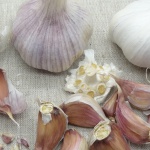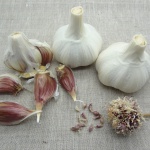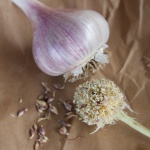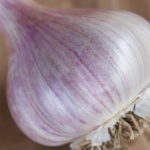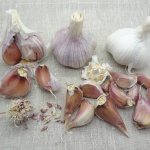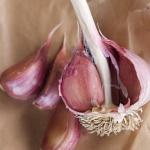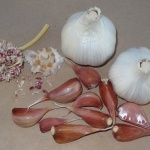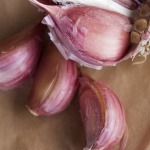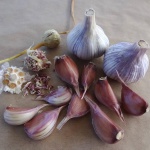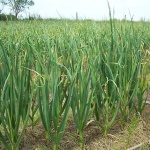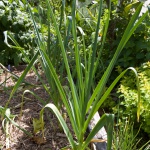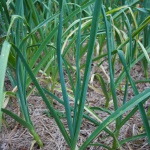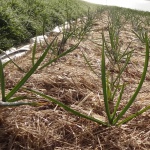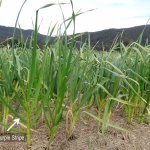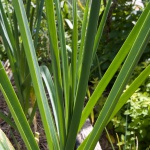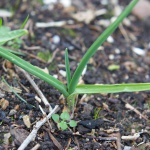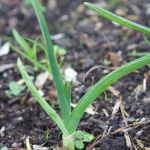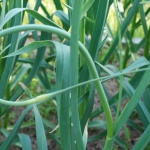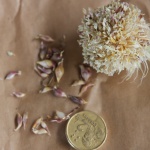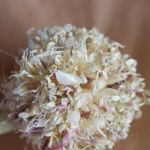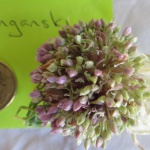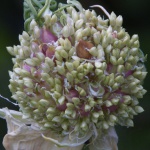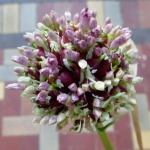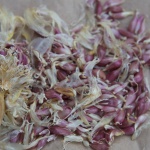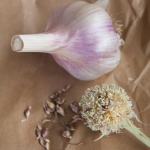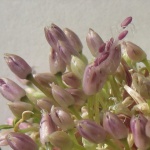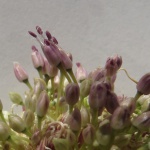Standard Purple Stripe Group
Hardneck – Strongly Bolting
Ancestors and antecedents of all other garlic cultivars. Genetically diverse, some produce seed. There are about a dozen named cultivars in the Standard Purple Stripe Group with around half a dozen grown in quantity commercially around the world. Whilst a few different Standard Purple Stripe cultivars have been brought into Australia in the past, Dunganski appears to be the only one currently grown in any quantity. There are several Turban cultivars with Purple Stripe in the name but these are not Standard Purple Stripes.
General Information
| Flavour | Rich, strong, fusion of different flavours. Often a nutty flavour when cooked. |
|---|---|
| Storage | Medium to long. |
| Growing location | Tasmania, also Victoria, Southern NSW in higher cooler regions. |
| Growing requirements | Cooler climates are best, but may do well for a year or two in warmer more humid regions before reducing in size. |
| Planting and harvest | Mid to late |
Bulb
| Shape | Round globe, symmetrical, can be quite large. |
|---|---|
| Skin colour and texture | White with vivid to muted purple/pink colouring and striping. |
Clove
| Number and layout | 8-12 in one layer. Larger bulbs may have second layer with second skin. |
|---|---|
| Size and shape | Crescent shaped, tall slender pointed elongated tips. |
| Skin colour and texture | Purple-bronze-brown often with purple striping. Hard to peel but get easier with storage. |
Plant
| Size and shape | Tall, robust 1.5-1.9m with uncurled scape. |
|---|---|
| Leaves | Dark green, medium width, widely spaced, grow at wide angle to stem and stay very straight. Don't flop. |
| Young plants | Grow in a distinctive spiral shape that disappears as the plant matures. |
| Matures | Late growing and late maturing. |
| Scape |
Thick, strong, developes early in growth cycle. Usually ¾ (270°) turn, then straightens. Remove scape for large bulb. |
| Umbel and beak | Plump and round with medium to long beak. Yellow spathe. |
| Bulbils and flowers | Very numerous tiny to small bulbils, 100-200 purple. Flowers numerous, pink-purple, may produce seed. |
